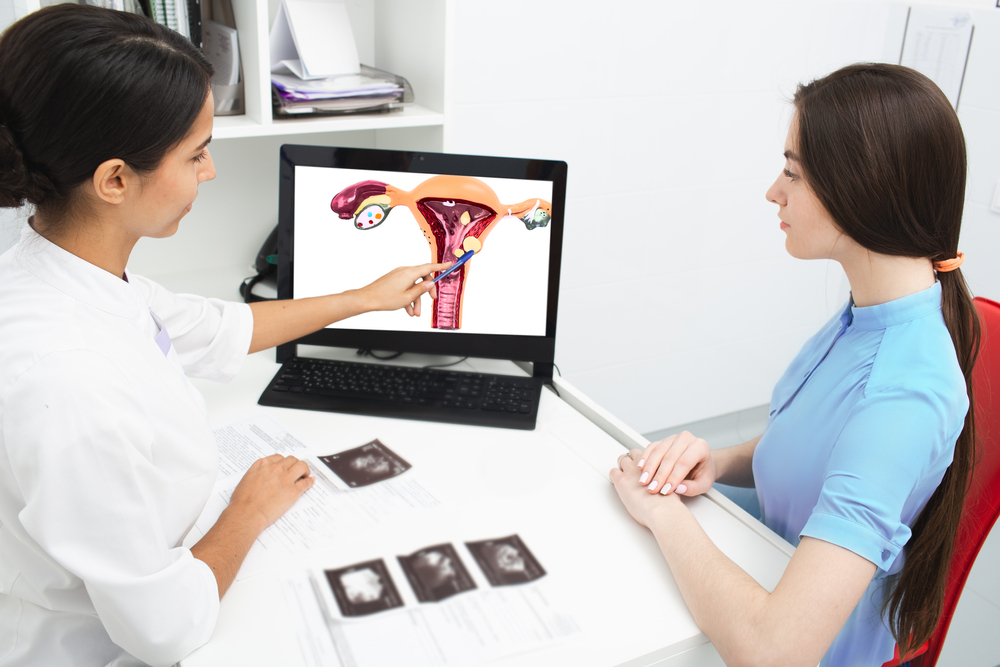How Uterine Artery Embolization is Revolutionizing Fibroid Treatment?

Fibroids, or uterine leiomyomas, are benign tumours that grow in the uterus and affect millions of women worldwide. While these growths are typically noncancerous, they can cause a range of symptoms that greatly impact a woman's quality of life. Traditional uterine fibroids treatment included surgery, which can involve a lengthy recovery process and potential complications.
However, in recent years, a new technique called uterine artery embolization (UAE) has emerged as a promising alternative. UAE is a minimally invasive procedure that blocks fibroids' blood supply, causing them to shrink and die. The success rate of UAE, or uterine artery embolization, is estimated to be between 95-97%. In this post, we'll explore how UAE is revolutionizing fibroid treatment and why it's quickly becoming a preferred option for women seeking relief from their symptoms.
How Does Uterine Artery Embolization Work?
Uterine artery embolization (UAE) is a minimally invasive procedure, during the procedure, the doctor inserts a catheter into the artery that supplies blood to the uterus. The doctor then uses a special device to block the artery, which reduces or stops the blood flow to the uterus. This results in the symptoms from the uterine condition being relieved.
Once the catheter is in place, small particles are injected into the uterine arteries, which block the blood supply to the fibroids, eventually causing the fibroids to shrink and die over time. The procedure typically takes about 1-2 hours to complete and is performed under local anaesthesia.
Compared to traditional surgeries for fibroids, such as myomectomy or hysterectomy, UAE has several advantages. Here are the benefits of UAE compared to traditional surgeries for fibroids in bullet points:
- Less invasive procedure: UAE is a minimally invasive procedure that uses a catheter to block the blood supply to the fibroids, causing them to shrink and die. This is a less invasive alternative to traditional surgeries, which require large incisions and more invasive techniques.
- No large incision is required: Since UAE is performed using a catheter inserted through a small incision in the groin, there is no need for a large abdominal incision. This reduces the risk of complications such as infection and bleeding.
- Shorter recovery time: UAE typically requires a shorter recovery time than traditional surgeries. Most patients can return to normal activities within a week or two, compared to several weeks or months for traditional surgeries.
- Same-day procedure: UAE is often performed on an outpatient basis, which means patients can go home the same day as the procedure.
- Preserves the uterus: Unlike hysterectomy, which involves removing the uterus, UAE preserves the uterus. This is an important consideration for women who wish to maintain their fertility or who want to avoid the side effects of hysterectomy.
- Does not affect fertility: UAE has been shown to have no adverse effects on fertility. In fact, many women have successfully become pregnant and carried to term after UAE.
- Lower risk of complications: UAE has a lower risk of complications such as infection, bleeding, or damage to surrounding organs compared to traditional surgeries.
- Reduced need for pain medication: Since UAE is a minimally invasive procedure, it typically results in less pain and discomfort compared to traditional surgeries. This means that patients may need less pain medication during their recovery.
- Less scarring: Because UAE is performed through a small incision in the groin, there is less scarring compared to traditional surgeries.
- Lower cost compared to traditional surgeries: UAE is often less expensive than traditional surgeries, which can require longer hospital stays and more extensive post-operative care.
Who Can Benefit from Uterine Artery Embolization?
Not all women are good candidates for the procedure.
Here are some symptoms of fibroids uterine and criteria for candidacy for UAE:
- Women who have symptomatic fibroids, such as heavy menstrual bleeding, pelvic pain, or pressure
- Women who do not want to undergo surgery or cannot undergo surgery due to medical reasons.
- Women who want to preserve their uterus or maintain their fertility.
- Women who do not have a history of pelvic radiation therapy.
- Women who do not have large fibroids that may not respond well to UAE.
Success Rates and Long-Term Outcomes of Uterine Artery Embolization
Uterine artery embolization (UAE) has been shown to be a highly effective treatment option for fibroids here are some statistics on the success of UAE in treating fibroids:
In terms of long-term outcomes, UAE has been shown to be comparable to traditional surgeries such as hysterectomy and myomectomy. However, UAE offers a number of advantages over these procedures, such as a shorter recovery time, preservation of fertility, and a lower risk of complications.
One potential long-term effect of UAE is that the fibroids may regrow over time. However, this is relatively rare and can be managed with additional treatments if necessary. Additionally, UAE does not increase the risk of uterine cancer or other reproductive cancers, as some traditional surgeries can.
Conclusion
Using Uterine Artery Embolization (UAE), fibroids can now be treated in a minimally invasive manner. With its numerous advantages, such as a shorter recovery time, fertility preservation, and high success rates, UAE has become a preferred treatment option for women with symptomatic fibroids who want to avoid surgery or maintain their fertility.
Compared to traditional surgeries, UAE offers a number of benefits that make it an attractive option for many women. UAE has been shown to be highly effective in treating fibroids, and long-term follow-up studies have found that the majority of women continue to experience symptom relief for up to 10 years after the procedure. If you want to learn more about this, do consult the Vascular department and Dr. ABCD to get specialized treatment.






